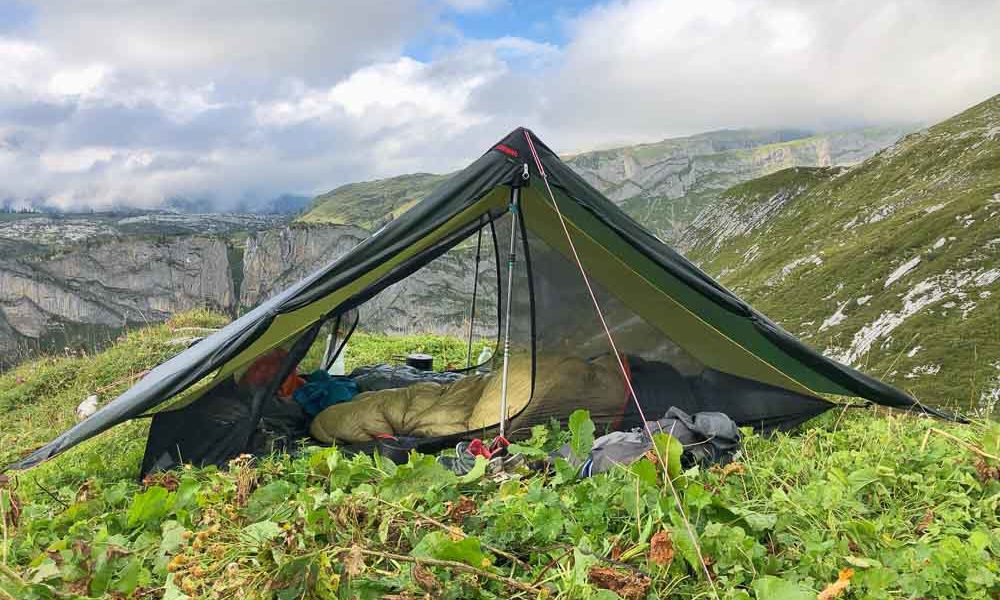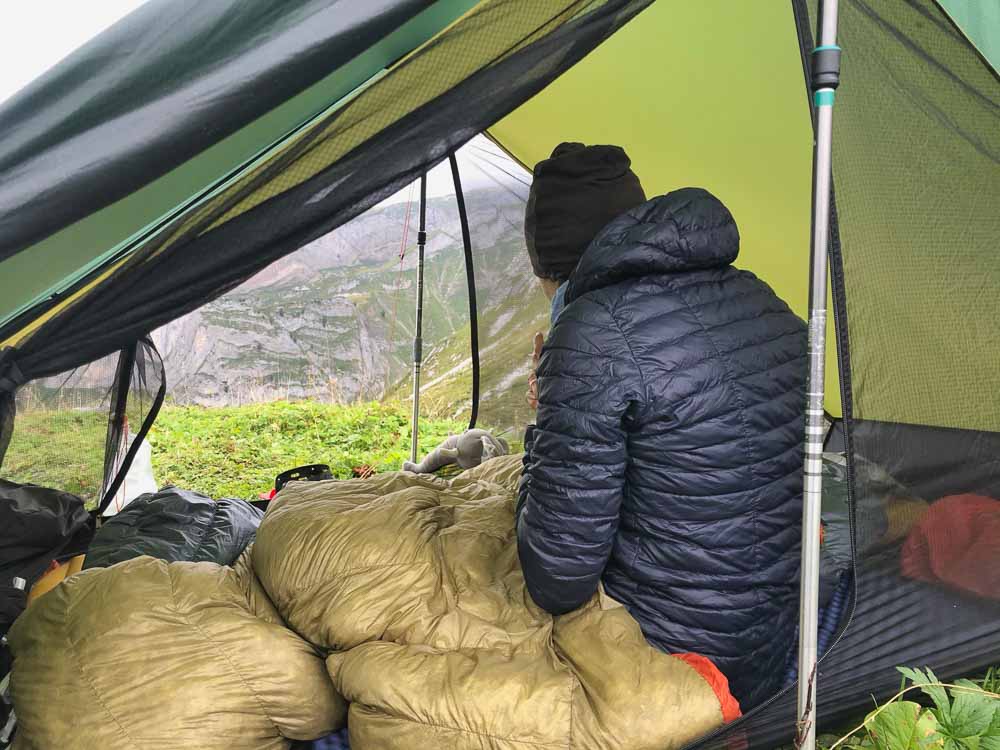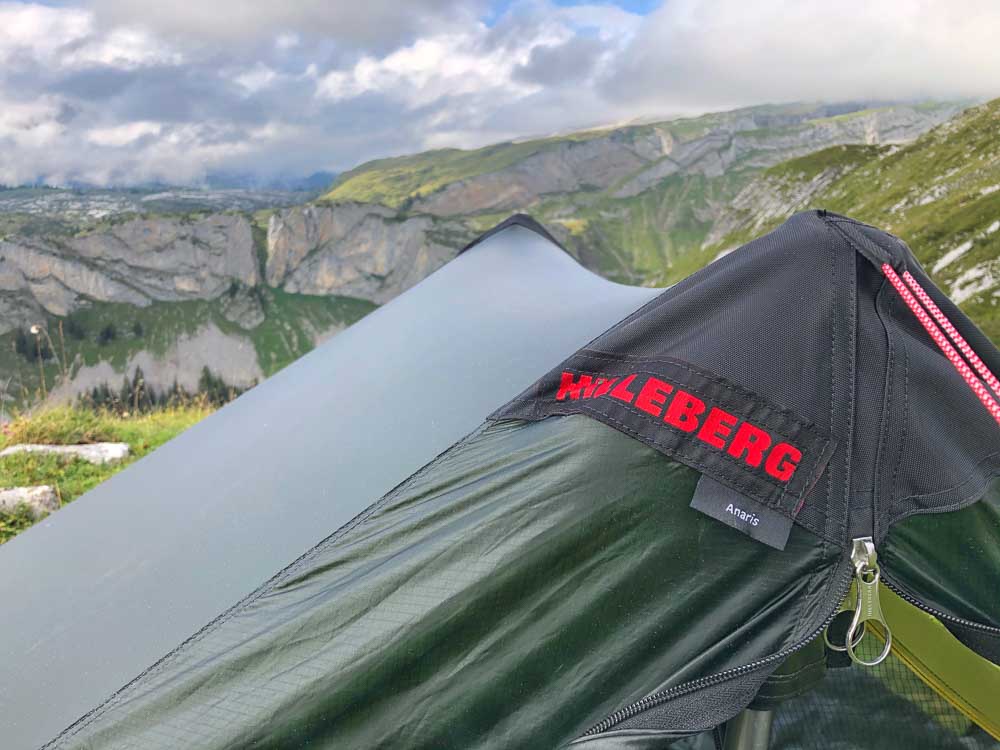Hilleberg have just released their first trekking pole-supported tent since 1973. Richard Hartfield tests how it stands up against the new generation of lightweight backpacking shelters.
I’ve always associated Hilleberg with dome or tunnel-shaped tents that use dedicated poles, and are built to withstand anything short of a hurricane. Their construction quality and fabrics are unrivalled, but these tents have always been overkill for my lightweight backpacking needs. So I was really surprised when I first saw an advert for the Anaris: Hilleberg’s new, modular, two-personbackpacking shelter that goes up with trekking poles and only weighs 1.4kg’s.
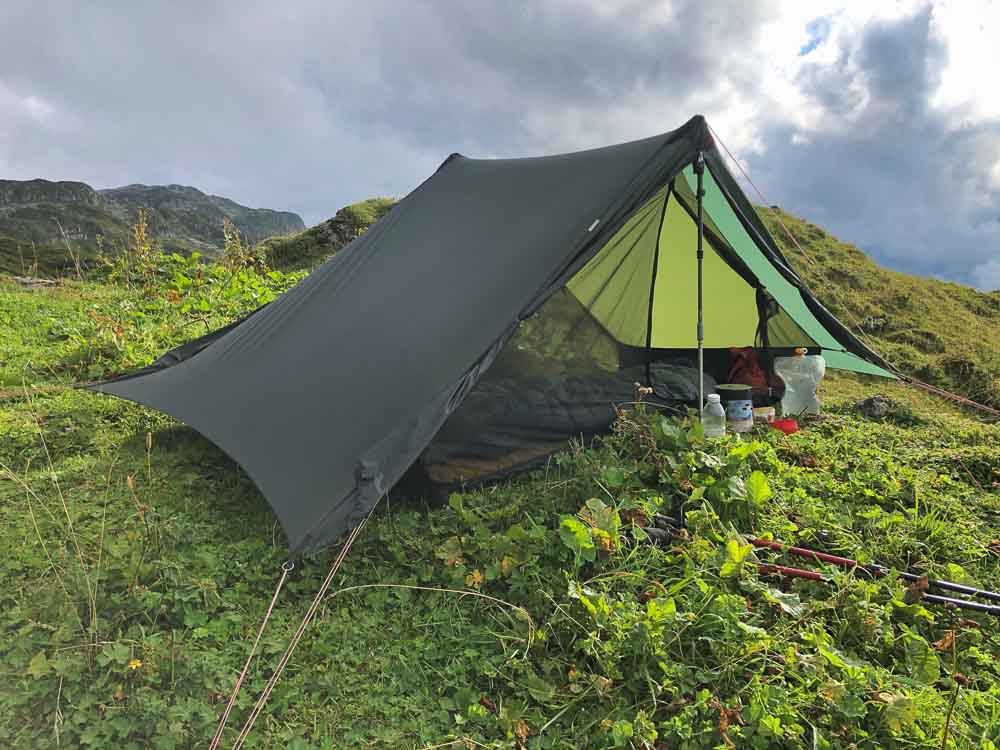 Many so-called lightweight tents aren’t always the lightest choice for three season backpacking. If you always use trekking poles, a ridge tent like the Anaris will generally offer the best weight savings. The main caveat with this style of shelter is that in some conditions, a free-standing tent with dedicated poles and fewer pegging points will be more practical.
Many so-called lightweight tents aren’t always the lightest choice for three season backpacking. If you always use trekking poles, a ridge tent like the Anaris will generally offer the best weight savings. The main caveat with this style of shelter is that in some conditions, a free-standing tent with dedicated poles and fewer pegging points will be more practical.
What you get with a ridge tent like the Anaris is a versatile, modular shelter. When hiking somewhere with reasonable temperatures and no bugs, the inner section can be left at home, and it becomes a very storm-worthy, shaped tarp that only weighs 640 grams. The different pitching options also suit a wide range of weather conditions; it’ll cope well with summer mountain storms, but in better weather, the fly can be rolled up or even removed for greater views and ventilation.
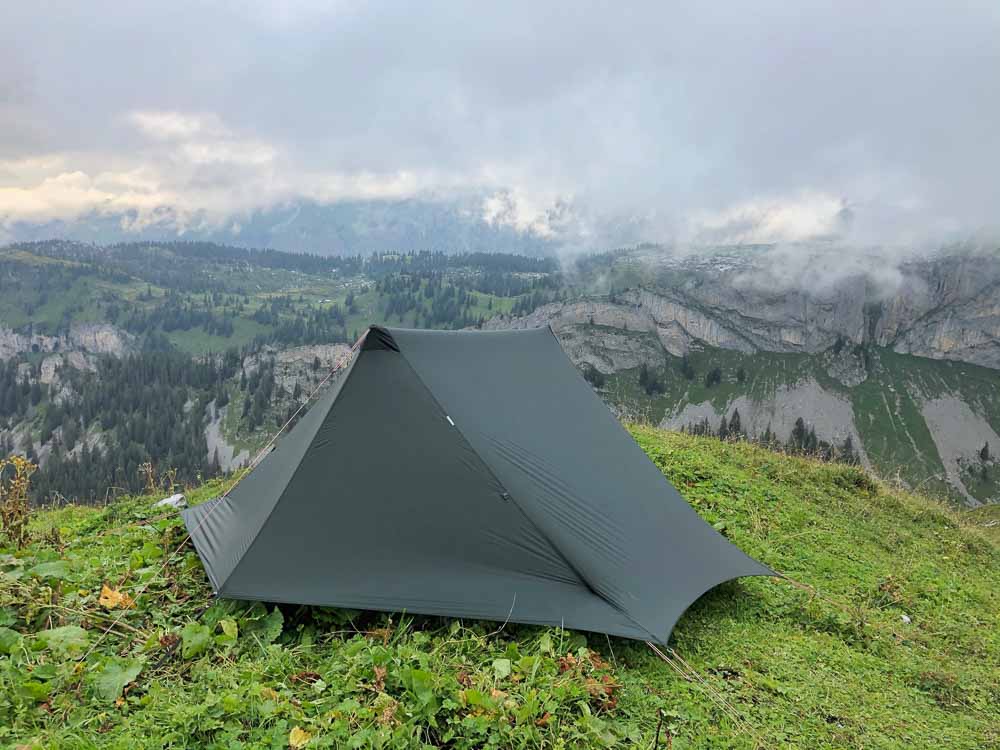 IN USE
IN USE
The basic shape and design of the Anaris didn’t appear so unique at first glance. I’ve used other backpacking shelters which look uncannily-similar in design. But I quickly discovered many nuances that add up to make the Anaris a top quality shelter in its own right.
For a start, the interior space feels massive compared to other similar ridge tents that I’ve used. Hilleberg’s own premium, lightweight fabrics and the carefully-optimised shape allow the Anaris to pitch higher and extend further without adding significant weight. The bottom edge of the sloping walls inside are raised up much higher at the head and foot ends than on other similar shelters. Consequently, I never find my head or feet brushing against them or picking up condensation, which is a common issue inside other tents like this.
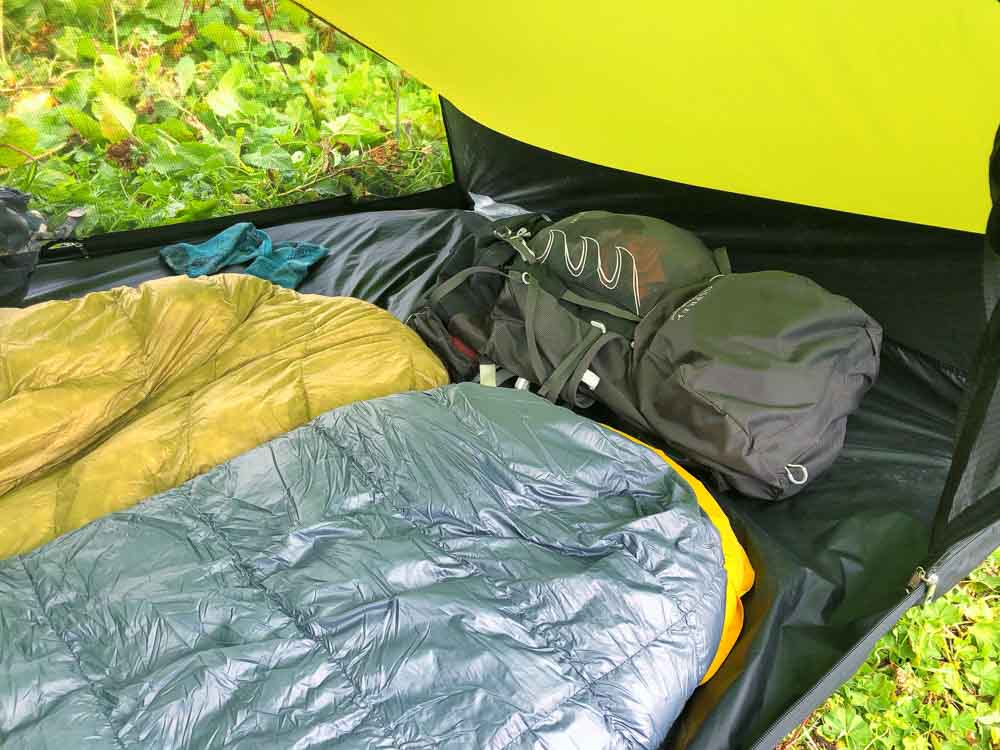 The Anaris feels like a luxurious two person shelter, and can easily cater to taller people. My girlfriend and I can comfortably place our sleeping mats side by side, with ample room left to spare. There’s even enough space beneath the bottom of our mats to easily accommodate rucksacks as well as other kit. The two vestibules provide even more storage space, and areas for cooking.
The Anaris feels like a luxurious two person shelter, and can easily cater to taller people. My girlfriend and I can comfortably place our sleeping mats side by side, with ample room left to spare. There’s even enough space beneath the bottom of our mats to easily accommodate rucksacks as well as other kit. The two vestibules provide even more storage space, and areas for cooking.
As you’d expect from a Hilleberg, the construction in all areas oozes quality, and promises exceptional longevity for the shelter. There’s a very tough, heavily-reinforced sleeve at each apex, into which the trekking poles fit – a welcome improvement over other ridge tents I’ve used, since this is such a crucial point of high stress on the flysheet.
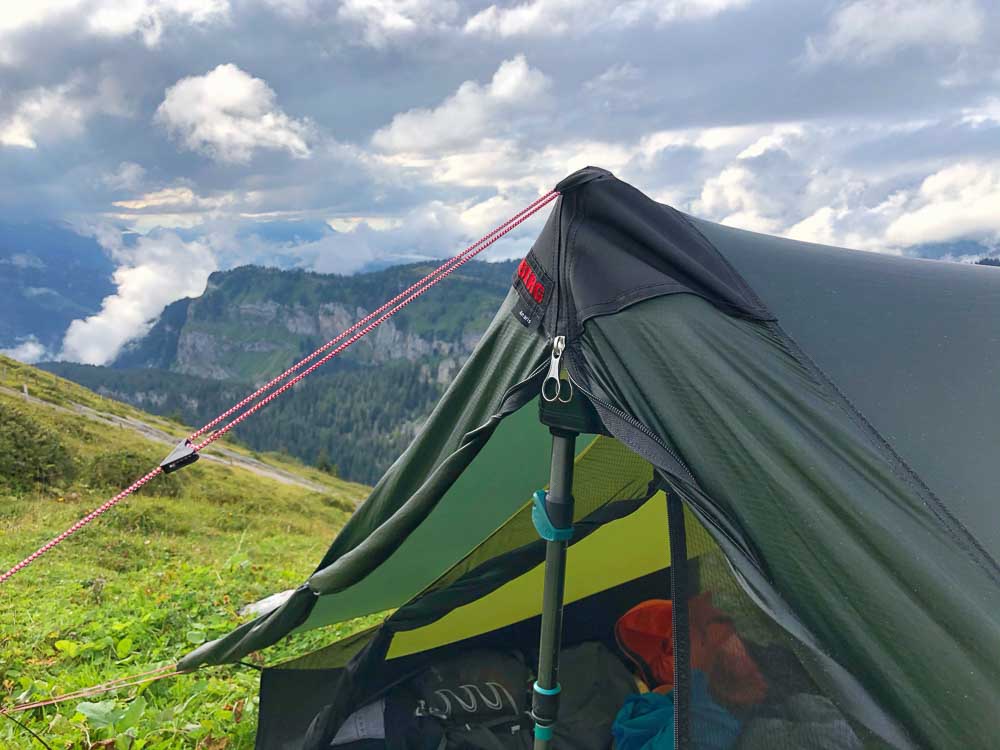 The zips, attachment points and line tensioners all feel much sturdier and of higher quality than on other tents, and the floor is made of an extremely rugged, 50 denier nylon, making a groundsheet unnecessary in nearly all conditions.
The zips, attachment points and line tensioners all feel much sturdier and of higher quality than on other tents, and the floor is made of an extremely rugged, 50 denier nylon, making a groundsheet unnecessary in nearly all conditions.
It’s worth noting that the Anaris has a considerable gap between the outer flysheet and the ground. This ensures good ventilation, and the outer fly stretches so far beyond the edges of the inner tent that wind-blown rain getting inside isn’t an issue. If conditions are truly awful, it’s always possible to lower the supporting poles and then re-tension the flysheet much closer to the ground.
The four outer doorsare huge and very easy to open up, in whichever arrangement is desired. This allows fantastic views from inside, whilst still providingprotection against wind and lightrain. Rolling back the outer fly completely is also surprisingly quick and easy, thanks to the particularly well designed toggles attaching the two tent layers.
 A minor frustration for me is the lack of two-way zippers on the inner doors, which feels like an oversight. 12 pegs are also required to pitch the shelter, which is quite a lot, even for this style of tent.
A minor frustration for me is the lack of two-way zippers on the inner doors, which feels like an oversight. 12 pegs are also required to pitch the shelter, which is quite a lot, even for this style of tent.
I was curious as to why the whole inner tent wasn’t made entirely of the same see-through mesh material used on the doors. This would have lowered the weight even further, and maximised views from inside whilst the flysheet is removed or rolled back. After speaking to Hilleberg, they explained that a partially solid inner was chosen to increase the overall warmth inside of the tent, and to lessen the likelihood of condensation drips passing through from the outer flysheet.
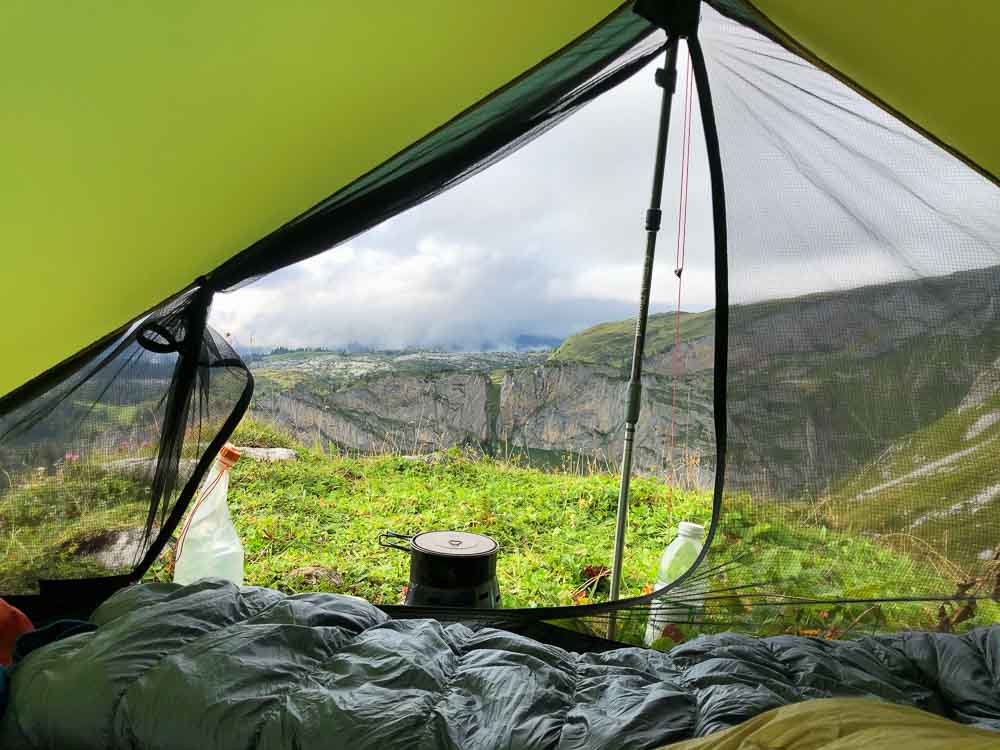
OVERALL
The Anaris is remarkably lightweight for such a well-constructed and durable backpacking tent. The typical Hilleberg build quality will ensure that it outlives most of the competition. But you can’t overlook the hefty price tag, which will be far too extravagant for many people. There are similarly-designed shelters out there available for considerably less money, albeit at the expense of some longevity and performance. This style of ridge tent also requires trekking poles, and a lot ofpegsto get a solid pitch. Because of this, a free-standing shelter will still be a better investment for those who don’t always carry trekking poles, or who regularly need to pitch on extremely loose, rocky or snowy ground where pegging is impractical.

